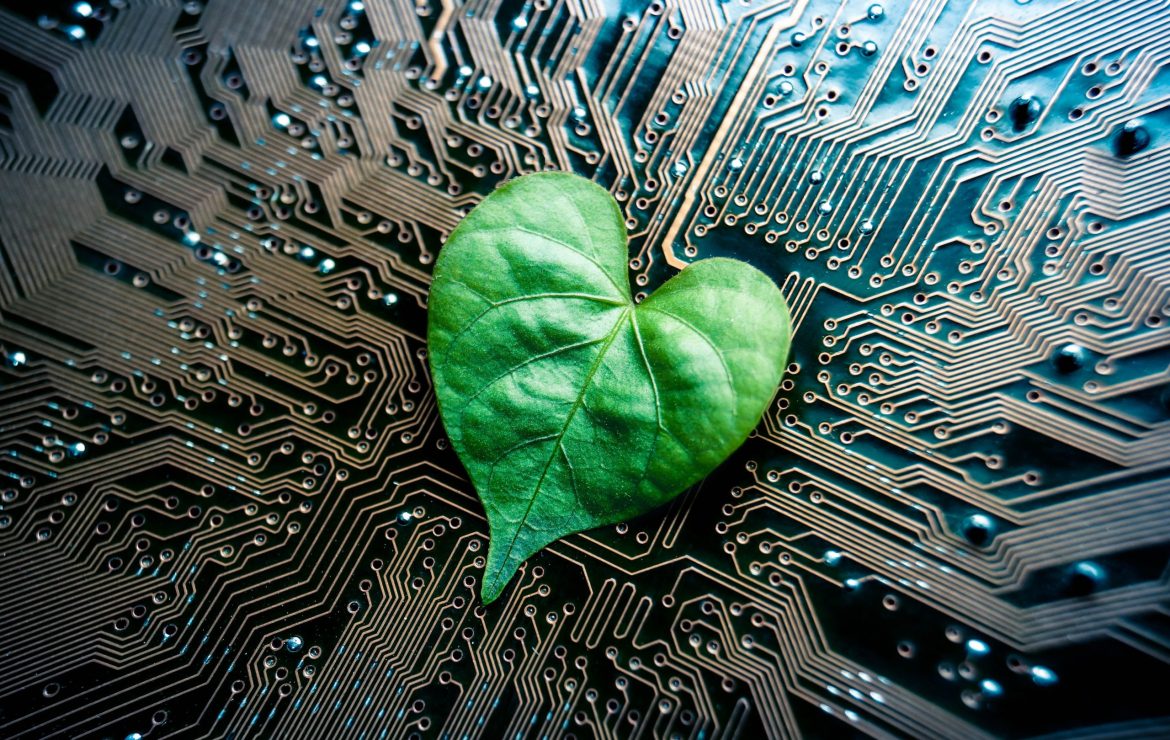If data centres could be considered the backbone of our digital world, their increasing prevalence poses a significant environmental challenge amidst concerns about the carbon footprint of the technology sector. Thus the question remains: could the solution come from artificial intelligence?
The challenge is indeed immense. By 2025, this sector is expected to consume 20% of the world’s electricity and produce 5.5% of our total carbon emissions.
Moreover, as various uses and applications consume increasing amounts of electricity, this pace may accelerate even further.
Experts say now is the time for server optimization, as they are already undergoing modifications to suit the needs of artificial intelligence, which an official at Google described as “a transformational point we only see once in a generation in the information world.”
The Energy Efficiency Race
Tools for generative artificial intelligence, such as OpenAi’s “GPT-4” used in “Chat GPT” and Google’s “Balm-2” used in “Bard,” are being developed through two stages: “training” and “deployment,” both of which consume energy.
Researchers from the University of Massachusetts, who trained these tools in 2019, discovered that training one of these models produces emissions equivalent to the emissions of five cars throughout their lifecycle.
A recent joint study by Google and the University of Berkeley concluded that training the generative robot “GPT-3” produced 552 tons of carbon emissions, which is equal to the emissions of a car driven for two million kilometres.
However, “GPT-4” was trained on 570 times the amount of data, a number that will undoubtedly increase with the advancement and proliferation of artificial intelligence and its capabilities.
This paved the way for the production of microprocessors known as “Graphics Processing Units” (GPUs) by the chip manufacturer “NVIDIA”, which despite boasting more energy efficiency compared to conventional electronic chips, still consume an enormous amount of power.
After the training phase, the deployment of generative artificial intelligence tools via the cloud consumes energy with every data request received, thus this phase requires significantly more energy than the previous stage.
However, companies can choose more environmentally friendly solutions as cloud servers do not require extremely powerful processors. Major cloud computing companies like “Amazon Web Services”, “Microsoft” and “Google” have confirmed that they are committed to achieving the highest possible energy efficiency.
Moreover, Amazon Web Services has pledged to achieve carbon neutrality by 2040, while “Microsoft” has committed to being a “zero-waste, carbon-negative company” by 2030.
Initial indicators suggest that these groups are determined to achieve their goals. Between 2010 and 2018, the energy consumption of data centres worldwide increased by only 6%, while their usage increased by 550%, according to figures from the International Energy Agency.
Climate Change
On the other hand, major artificial intelligence companies emphasize that the carbon footprints of this modern sector are not at stake, but rather the debate about them obscures its potential to create a true revolution.
OpenAI’s founder Sam Altman, the developer of “Chat GPT,” said, “Addressing the problem of climate change will not be difficult once we have a super artificial intelligence.”
“This demonstrates how big our dreams should be… Imagine a system that you can ask (tell me how to produce a large amount of clean energy at a low cost?, How do I capture carbon efficiently and how do I build a factory capable of doing so on a global scale?)”, He explained.
For his part, Jensen Huang, the president of NVIDIA believes that the widespread adoption of artificial intelligence and the processes it can achieve at ultra-fast speeds will reduce the demand for cloud services, thus reducing the consumption of this sector.
Thanks to artificial intelligence, laptops, mobile phones, and cars may transform into highly efficient, high-energy-efficient computers that do not require data usage from the cloud.
“In the future, you will have a high-precision processor in your phone, and 90% of the pixels will be generated, instead of 100% currently, and only 10% of them will be downloaded, which means your data consumption will decline,” Huang told reporters.
Nevertheless, some experts argue that the race to develop artificial intelligence is distracting from environmental risks.
“Major institutions are currently spending huge amounts of money to develop and deploy artificial intelligence. I don’t think they’re worried about the environmental impact at the moment, but I think this will happen later”, Aaron Younger said.













